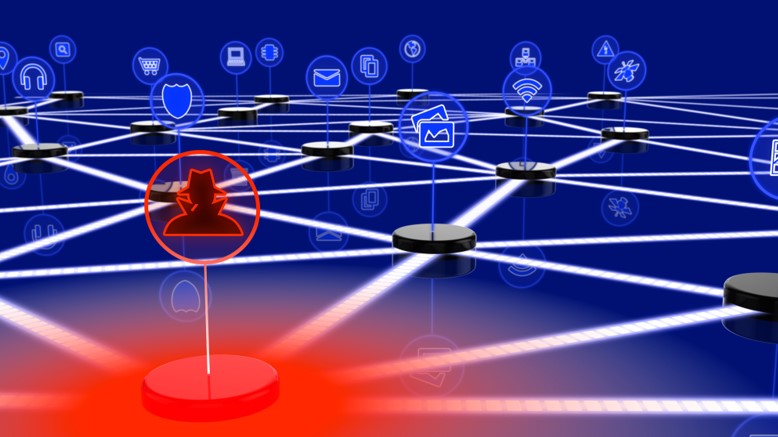Tag Archive for: IoT
IoT (Internet of Things) Security Market 2023 Share Value by Leading Players – Symantec Corporation, Cisco Systems, Inc., International Business Machines Corporation, RSA Security LLC, Fortinet Inc.
/in Internet Security
“
The Global IoT (Internet of Things) Security Market Report offers a thorough and in-depth analysis of the industry to aid clients in understanding the situation, effectiveness, and development potential of the market. The purchasers of the reports profit from this. The study also looks into important worldwide companies, their marketing plans, and their investing ideologies in order to provide readers with a better grasp of possible industry trends. Customers may use the information in this report to more precisely identify the potential opportunities in the global IoT (Internet of Things) Security Market and to create plans to take advantage of those opportunities for higher profitability.
Free Sample Report + All Related Graphs & Charts @ https://www.adroitmarketresearch.com/contacts/request-sample/45?utm_source=Saroja05June
Leading players of IoT (Internet of Things) Security Market including:
Symantec Corporation, Cisco Systems, Inc., International Business Machines Corporation, RSA Security LLC, Fortinet Inc., and Palo Alto Network.
The COVID-19 pandemics effects are taken into consideration in the worldwide IoT (Internet of Things) Security market research, making it possible for readers to understand how the pandemic impacted the markets nature and the current developments that are most probable to have an impact on it going forward. In addition to providing a detailed analysis of the several businesses that compete in the worldwide IoT (Internet of Things) Security market, the report also provides an overview of recent technology developments and production possibilities. The report examines such markets anticipated size and developments years 2022 through 2029 in order to aid readers in identifying fresh business opportunities. The COVID-19 pandemic has had a large impact on the worlds IoT (Internet of Things) Security marketplace, making it difficult for companies to continue making money.
The analysis analyzes the industrys competitive environment in great detail and identifies the major market drivers and market restraints. The Global IoT (Internet of Things) Security Market Report shows that despite the COVID-19 disruption, there is still room for…
The Growing Importance of IoT Security in Cybersecurity Technologies
/in Internet Security
The Growing Importance of IoT Security in Cybersecurity Technologies
The Internet of Things (IoT) has rapidly become an integral part of our daily lives, with billions of interconnected devices ranging from smart home appliances to industrial sensors. This vast network of devices generates an enormous amount of data, providing valuable insights and enabling automation in various sectors. However, the increasing reliance on IoT devices also brings forth a significant challenge in terms of cybersecurity. As the number of connected devices continues to grow, so does the potential for cyber threats and attacks. Consequently, the importance of IoT security in cybersecurity technologies has become a critical concern for businesses, governments, and individuals alike.
One of the primary reasons for the growing importance of IoT security is the sheer scale of the IoT ecosystem. According to recent estimates, there will be more than 75 billion connected devices worldwide by 2025. This exponential growth in the number of IoT devices creates a larger attack surface for cybercriminals, making it easier for them to exploit vulnerabilities and gain unauthorized access to sensitive data. In fact, a study by the Ponemon Institute found that 80% of IoT applications are not tested for vulnerabilities, making them prime targets for cyberattacks.
Moreover, the nature of IoT devices makes them particularly susceptible to cyber threats. Many IoT devices are designed with convenience and cost-effectiveness in mind, often at the expense of security features. For instance, some devices may lack proper encryption or authentication mechanisms, making it easier for hackers to intercept data or take control of the device. Additionally, the lifespan of IoT devices tends to be longer than that of traditional IT hardware, meaning that they may continue to operate with outdated software and security patches, further increasing their vulnerability to cyberattacks.
The consequences of IoT security breaches can be severe, not only in terms of financial losses but also in terms of safety and privacy. In 2016, the Mirai botnet attack demonstrated the potential damage that can be caused by exploiting IoT devices. The…
5 IoT Security Fails of Smart Devices And Lessons Learned5 IoT Security Fails Of Smart Devices And Lessons Learned
/in Computer Security
Hackers are already eyeing unprotected IoT devices every user has in their homes. These small components are a default technology that manufacturers put in all sorts of devices — from baby monitors, printers, and pacemakers to smart TVs.
With billions of Internet of Things devices that are globally connected and sharing what is often sensitive user data, we need to talk about IoT Security.

From harmless pranks to life-endangering hacking, vulnerable IoTs can cause quite a stir. What can we learn from IoT hacking incidents that happened in recent years? Why is putting the best security practices for IoT devices so challenging?
Hacking of Amazon’s Ring Cameras
In 2020, several of Amazon’s Ring security systems, which feature a camera and two-way communication, were hacked. A home security camera allowed strangers to communicate with children. Some people even received death and sexual threats, while others were blackmailed.
This security incident might ring a bell if you’re seen the reports of the class action against Amazon in the news.
What happened, exactly?
Hackers broke into the Ring account linked to the camera, exploiting Amazon’s lax security practices. As a response, Amazon urged customers to change their passwords to stronger ones and enable two-factor authentication.
The security lesson that was learned in this IoT hacking case?
Users have an inherent trust in the technology they purchase — they believe that it’s safe and that it’s not their job to secure it. Pinning the cyber incident on them and failing to improve the security measures is a poor way of handling a security problem.
Roomba Recording Woman On the Toilet
In 2020, workers from Venezuela posted a series of images shot by a robot vacuum, Roomba — raising major data privacy concerns. One of the images captured a woman sitting on a toilet.
This was possible because the data uploaded in the cloud via the IoT device was not secured enough.
Roomba confirmed that the images were, in fact, shared by the robot vacuum. Also, it claims that the images stem from the training of the robot in the development stages and that this version is not the one available on the…


